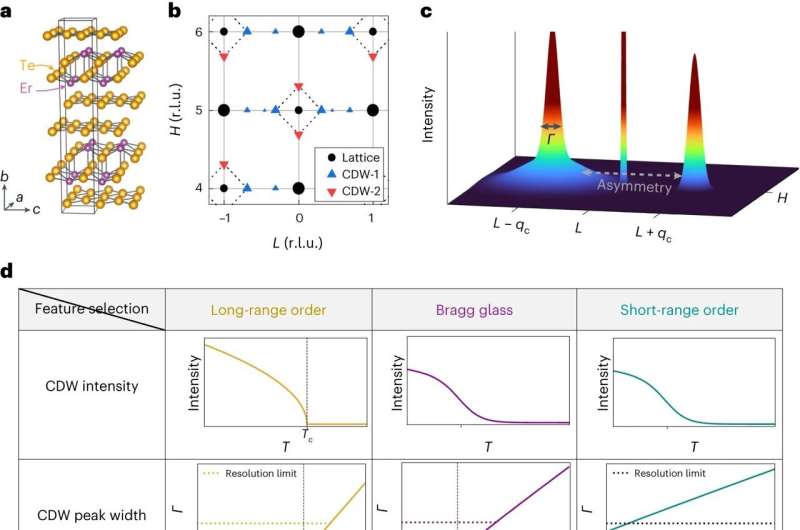This article has been reviewed according to Science X's editorial process and policies. Editors have highlighted the following attributes while ensuring the content's credibility:
fact-checked
trusted source
proofread
Physicists detect elusive 'Bragg glass' phase with machine learning tool

Cornell quantum researchers have detected an elusive phase of matter, called the Bragg glass phase, using large volumes of X-ray data and a new machine learning data analysis tool. The discovery settles a long-standing question of whether this almost–but not quite–ordered state of Bragg glass can exist in real materials.
The paper, "Bragg glass signatures in PdxErTe3 with X-ray diffraction Temperature Clustering (X-TEC)," is published in Nature Physics. The lead author is Krishnanand Madhukar Mallayya, a postdoctoral researcher in the Department of Physics in the College of Arts and Sciences (A&S). Eun-Ah Kim, professor of physics (A&S), is the corresponding author. The research was conducted in collaboration with scientists at Argonne National Laboratory and at Stanford University.
The researchers present the first evidence of a Bragg glass phase as detected from X-ray scattering, which is a probe that accesses the entire bulk of a material, as opposed to just the surface of a material, in a systematically disordered charge density wave (CDW) material, PdxErTe3. They used comprehensive X-ray data and a novel machine learning data analysis tool, X-ray Temperature Clustering (X-TEC).
"Despite its theoretical prediction three decades ago, concrete experimental evidence for CDW Bragg glass in the bulk of the crystal remained missing," Mallayya said.
Theoretically, there is a sharp distinction between three phases: long-range order, Bragg glass, and disordered state, Kim said. In the disordered state, the CDW correlation decays within a finite distance. In the long-range ordered state, the charge density wave correlation continues indefinitely.
In the Bragg glass phase, Kim went on, the CDW correlation decays so slowly that it will only completely vanish at infinite distances.
"The challenge is detecting these distinctions from experimental data that also reflects real-life issues like noise and finite resolution of the experimental setup," Kim said.
The researchers overcame key challenges through strategic synergy among materials, data, and machine-learning tools. On the materials front, they found, in collaboration with scientists at Stanford, a family of CDW materials that will allow a systematic study with control over dirt to use in the experiment—PdxErTe3. On the data front, they took massive amounts of data at Argonne National Laboratory in collaboration with Argonne scientists.
On the machine learning front, they used X-TEC, a machine learning tool, to analyze the massive volume of data with a scalable and automated approach.
"An experimental detection of Bragg glass phase through X-ray diffraction has settled the open question regarding the fate of CDW order subject to dirt," Mallayya said.
Going beyond the specific scientific problem, the paper presents a new mode of research in the age of large data, Kim said, "Using machine learning tools and data-scientific perspectives, we can go after challenging questions and track down subtle signatures through a comprehensive data analysis."
The researchers wrote that this detection of Bragg glass order and the resulting phase diagram significantly advance our understanding of the complex interplay between disorder and fluctuations. Moreover, using X-TEC to target fluctuations through a high-throughput measure of "peak spread" can revolutionize how the fluctuations are studied in scattering experiments.
More information: Krishnanand Mallayya et al, Bragg glass signatures in PdxErTe3 with X-ray diffraction temperature clustering, Nature Physics (2024). DOI: 10.1038/s41567-023-02380-1
Provided by Cornell University





















